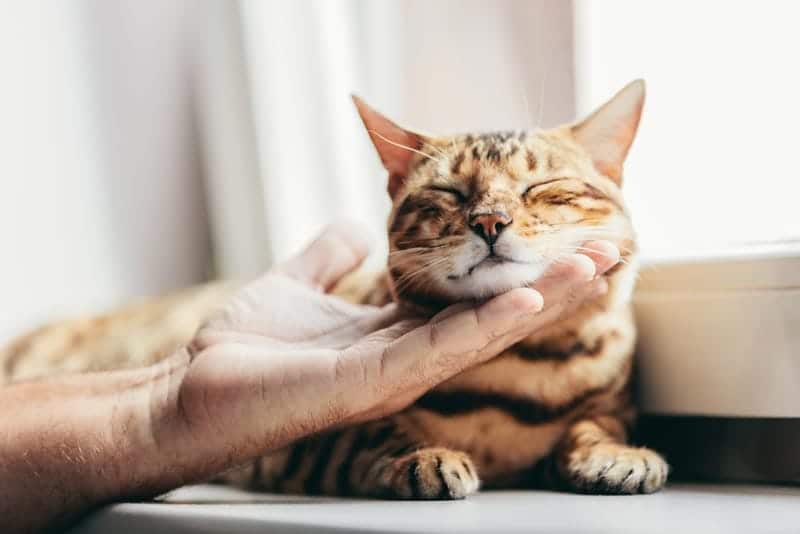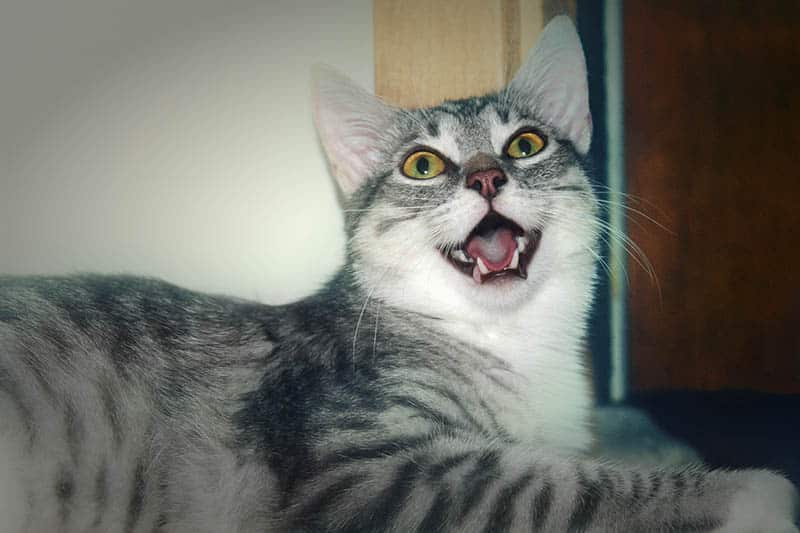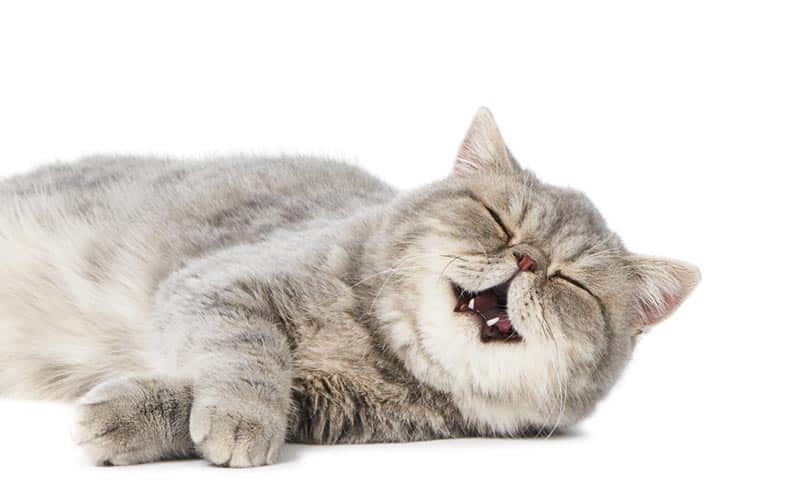Click to Skip Ahead
Felines have an impressive arsenal of vocalizations, and purring is one of the most adored. A cat’s purr is a comforting sound to many people and is instantly recognizable as a sound of contentment. When cats purr, it’s usually a long and slow sound; however, cats can sometimes breathe faster when they purr, which is normally not a happy purr at all.
Purring and Breathing Fast in Cats
Cats can purr when they’re in pain, and the purring of a cat in pain is usually fast and short, matching the cat’s faster breath. Tachypnea is the technical term for faster breathing than usual and is one of the ways cats can express pain. If your cat is purring and breathing rapidly, they could be anxious or in pain.
A cat’s body language can also help you identify the type of purr. For example, a cat lying on their back and purring, with their eyes half closed and tail relaxed, usually means they’re very content. Cats in pain may purr quickly and hunch over or hide.
Flattened ears and dilated pupils are also signs of pain in cats, but always check with your veterinarian when in doubt. Some researchers suggest cats purr when in pain to try and comfort themselves, as a child would with their blanket, in a self-soothing way.
Other reasons cats purr when they’re in pain include:
- For physical pain relief
- To control their breathing as tachypnea often occurs with painful conditions
- To speed up healing
Amazingly, cats purr at a very specific frequency. They purr at 25Hz to 100Hz, which is associated with increased bone and tissue growth to promote healing.

Is My Cat Purring or Breathing Heavily?
If you’re concerned about your cat breathing heavily, you can first look at their body language. If your cat is happy and relaxed, listen to them closely; if you hear a slow, continuous rumbling, your cat is purring.
A cat’s rumbling purr is air traveling through the larynx (the voice box) to produce a sound, which is why purring continues when the cat breathes in and out. Usually, heavy breathing will not be rumbling, but it might sound different than normal. Signs that your cat is breathing heavily or is having trouble breathing include:
- Breathing from their tummy (known as abdominal breathing)
- Breathing with their mouth open
- Blue gums (known as cyanosis)
- Crackling sounds or wheezing
If your cat displays any of these signs, you must take them to a vet immediately since a cat who cannot breathe is in a very serious and dangerous condition.
How do I Know if My Cat Is Breathing Too Fast?
To check that your cat is breathing normally, or if you’re worried about your cat’s breathing, you can set a timer on your phone or use a watch to count down 30 seconds. Then, count how many breaths your cat takes in 30 seconds (or a minute if they’ll stay still that long). This should only be done when they aren’t purring and are at rest, not playing.
If your cat takes more than 30 breaths in one minute (15 breaths in 30 seconds) when resting, they are experiencing tachypnea and are breathing too quickly. If your cat is breathing too quickly but isn’t experiencing signs of struggling to breathe, take the same measurements over the next 30 minutes.
If your cat is still breathing too fast or is experiencing signs of struggling to breathe, such as having a blue tongue or gums or breathing with their mouth open, contact your veterinarian immediately. Cats can sometimes breathe too quickly if they are stressed or have recently been exercising, but if your cat is breathing too fast at rest, they’re having trouble breathing.

Final thoughts
Cats often purr when they breathe in and out. Air is breathed in and taken through the larynx, vibrating against the vocal cords and making a deep purring sound. Cats normally purr when they’re content or excited, and it’s usually a low and slow sound. However, if your cat is breathing quickly and the purring is rapid, it may mean that your cat is in pain and should be examined by your veterinarian.
Featured Image Credit: Dmitry Kalinovsky, Shutterstock












